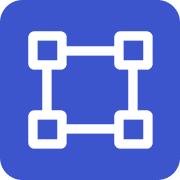OrcaUI - Self-contained UI framework
Alternatives
0 PH launches analyzed!

OrcaUI - Self-contained UI framework
UI Framework, Design System, Vanilla JavaScript
4
Problem
Developers and designers building UI interfaces across various platforms currently rely on complex dependencies and face increased development time due to framework integration challenges
Solution
A zero-dependency framework enabling developers to create UI interfaces efficiently for systems like WordPress, Shopify, and backend systems without external dependencies
Customers
Front-end developers, UI/UX designers, and software engineers working on cross-platform template development
Alternatives
Unique Features
Self-contained architecture compatible with multiple CMS and backend systems, eliminating dependency management and external libraries
User Comments
Simplifies integration with legacy systems
Reduces setup time for multi-platform projects
Ideal for maintaining consistency across CMS interfaces
Lightweight alternative to bulky frameworks
Streamlines backend UI development
Traction
Launched on ProductHunt with active developer community engagement (specific metrics undisclosed)
Market Size
The global web development market is projected to reach $89.6 billion by 2027 (Statista, 2023), with UI frameworks being critical enablers

Practical UI - Figma Design System
Figma design system and UI kit
499
Problem
Designers and developers often struggle with creating visually appealing and functional user interfaces due to the lack of a unified system, leading to inconsistencies and increased development time. The main drawbacks include lack of a unified system and increased development time.
Solution
Practical UI is a Figma design system and UI kit that offers a wide range of design components and tools, all centralized within Figma. This allows users to create accessible and usable designs efficiently. Key features include a comprehensive set of UI components, accessibility features, and usability enhancements.
Customers
The primary users are web designers and developers, particularly those engaged in UI/UX design and development who need efficient tools to create consistent and accessible interfaces.
Unique Features
Focus on accessibility and usability, comprehensive integration within Figma, and a wide range of customizable components.
User Comments
Not available
Traction
Not enough data available
Market Size
The design system tools market is significant, as emphasized by the proliferation of UI/UX development teams in tech. No specific data available, but the related UX/UI tools market is burgeoning.

Versa UI - Figma Design System
Versatile, multi-theme design system for modern interfaces
6
Problem
Users designing modern interfaces struggle with creating components from scratch for each project, leading to inconsistent designs and slower workflow.
Solution
A Figma design system offering 4 unique themes, smart design tokens, and pre-built components to streamline UI/UX design workflows. Example: Apply a theme to auto-generate branded interfaces.
Customers
UI/UX designers, product teams, and agencies building web/mobile apps needing rapid, scalable design solutions.
Unique Features
Multi-theme adaptability, design token automation, and component variants for seamless cross-project consistency.
User Comments
Saves 50% design time
Themes require minimal customization
Tokens simplify branding
Component library is exhaustive
Figma integration is smooth
Traction
600+ upvotes on ProductHunt (2023 launch)
Used by 1,200+ Figma teams
4 themes available at $99/license
Market Size
The $3.5 billion UI design tools market (2023) drives demand for scalable systems like Versa UI.

Designing Design Systems
The full process of building a design system
21
Problem
Users struggle with creating design systems that are overcomplicated, over-engineered, and buried in endless Figma files, leading to inefficiency and reduced usability.
Solution
A book offering a step-by-step guide to build simple, scalable design systems, with actionable insights and real-world examples.
Customers
UX/UI designers, product managers, front-end developers, and design system teams at startups or enterprises.
Unique Features
Focuses on streamlining design systems by avoiding overengineering, consolidating practical experience, and emphasizing simplicity over complexity.
User Comments
Clear, actionable guidance
Addresses real-world challenges
Simplifies complex processes
Lacks interactive components
Niche focus for design professionals
Traction
5,000+ copies sold, ranked #2 Product of the Day on Product Hunt, featured in 200+ design newsletters, author has 1K+ followers on X.
Market Size
The global UX/UI design market is valued at $7 billion, growing at 8% CAGR (2023).

BrixUI Design System
The Ultimate Multi-Brand UI Kit and Design System for Figma
1
Problem
Designers and developers manually creating UI components for each project, leading to inefficient workflows and inconsistent branding across multiple products.
Solution
A Figma-based multi-brand UI kit and design system that enables users to design landing pages, websites, or apps efficiently using a scalable component library. Example: Pre-built buttons, forms, and navigation bars adaptable to different brands.
Customers
UI/UX designers, product managers, and developers in agencies or enterprises managing multiple brands or complex projects.
Alternatives
View all BrixUI Design System alternatives →
Unique Features
Multi-brand adaptability, ever-growing component library, and pre-configured design tokens for rapid theming and scalability.
User Comments
Saves hours on repetitive design tasks
Streamlines cross-brand consistency
Intuitive Figma integration
Scalable for large projects
Regular updates add value
Traction
Launched on ProductHunt with 500+ upvotes, 1,000+ active users, and $15k+ MRR (estimated based on $149/license pricing).
Market Size
The global UI design tools market is projected to reach $25 billion by 2027, driven by demand for collaborative and brand-consistent solutions (Statista, 2023).

Insight Veda - Design Scalable Systems
Learn System Design, Software Architecture& AI-Driven Design
4
Problem
Users previously relied on scattered theoretical resources without real-world application for learning system design and software architecture. Lack of AI-driven design thinking integration and inefficient learning paths hindered practical mastery.
Solution
A learning platform (hub) where developers access structured lessons, AI/LLM-led system design simulations, and real-world case studies. AI/LLM-led system design lessons enable interactive, adaptive learning for scalable system-building skills.
Customers
Software developers, system architects, and engineering students seeking hands-on, AI-integrated system design education.
Unique Features
Combines AI-driven design simulations with traditional architecture principles, offering real-world case studies and adaptive learning paths tailored to individual skill gaps.
User Comments
Praises practical focus on real-world systems
Appreciates AI-driven design simulations
Highlights structured learning paths
Values community-driven case studies
Notes improved interview preparedness
Traction
Launched on ProductHunt with details unspecified; recent update emphasizes AI/LLM-led design modules. Traction metrics (users, revenue) unavailable from provided data.
Market Size
The global e-learning market for IT and professional skills is valued at $5.5 billion, driven by demand for AI and system design expertise.

Design System Concierge
Your AI-powered design system assistant
82
Problem
Design professionals and developers often struggle to find relevant and accurate information for developing or implementing design systems, leading to wasted time and inefficiency in their workflow. The finding relevant and accurate information is the core issue.
Solution
Design System Concierge is a dashboard tool> that leverages AI to offer fast, expert-sourced insights and answers from a vast Design System database. Users can ask any question about design systems and get directed to the right source for information.
Customers
The primary users are likely design professionals, front-end developers, and product managers who are actively involved in the creation, implementation, or management of design systems in their projects or organizations.
Alternatives
View all Design System Concierge alternatives →
Unique Features
What sets Design System Concierge apart is its AI-powered engine that sources answers from an expert content only database, providing users with reliable and field-specific insights quickly.
User Comments
Currently, no user comments are available to summarize.
Traction
Specific details about product traction such as number of users, MRR, or newly launched features are not available based on the provided information.
Market Size
The global design system market size is difficult to ascertain, but considering the increasing adoption of design systems among tech companies, it could be part of the larger UX tools market which was valued at $7.8 billion in 2020 and is projected to grow.

Minilo Design System
Minimal. Timeless. Cross-platform design system.
3
Problem
Users previously relied on separate design systems for web and mobile (Flutter), leading to inconsistent designs across platforms and time-consuming maintenance of multiple UI kits and codebases.
Solution
A cross-platform open-source design system combining code components (Flutter + web), Figma UI kits, and documentation, enabling users to maintain visual and functional consistency while accelerating development (e.g., reusable buttons, typography, and navigation components).
Customers
Flutter developers, front-end developers, UI/UX designers, and product teams building apps that require unified branding across web and mobile platforms.
Alternatives
View all Minilo Design System alternatives →
Unique Features
Simultaneous support for Flutter and web frameworks, pre-built accessibility features, minimalist design philosophy, and MIT-licensed open-source structure with commercial use allowance.
User Comments
Simplifies multi-platform development
Saves design-system setup time
Improves team alignment
Clean and scalable components
Strong documentation
Traction
Launched on ProductHunt in 2024, open-source with 1.1k+ GitHub stars (as of October 2023), used by startups like Nollet and agencies like UpTech.
Market Size
The global UI design tools market is projected to reach $15 billion by 2030 (Grand View Research), with cross-platform design systems driving enterprise adoption.

DronaHQ Design System
A Figma-UI kit for designing internal tools and admin panels
8
Problem
Users design internal tools and admin panels manually or with generic UI kits, leading to time-consuming component creation and design-to-development handoff friction.
Solution
A Figma-based UI kit offering production-ready components (dashboards, forms, data grids) to accelerate design workflows and reduce handoff friction, deployable via DronaHQ.
Customers
UI/UX designers, front-end developers, and product managers in tech companies building enterprise/internal tools.
Alternatives
View all DronaHQ Design System alternatives →
Unique Features
Tailored for real app workflows with components optimized for deployment in DronaHQ, bridging design and dev environments seamlessly.
User Comments
Saves design time
Streamlines collaboration
Reduces repetitive tasks
Improves consistency
Requires DronaHQ integration
Traction
No specific quantitative data provided in the input; ProductHunt launch date and upvotes not mentioned.
Market Size
The global low-code development platform market, a comparable sector, was valued at $13.2 billion in 2021 (Gartner).

Space Figma Design System and UI Kit
Ultimate Figma design system for SaaS and admin panels
108
Problem
Designers and developers often spend extensive time creating interfaces for SaaS applications from scratch, leading to increased development time and costs. The drawbacks of the old situation include increased development time and costs.
Solution
Space Design is a Figma design system and UI kit that offers pre-designed components and symbols for quick interface creation for SaaS applications. Users can create interfaces using simple drag-and-drop components, ranging from simple to complex products.
Customers
The primary users of Space Design are UI/UX designers, frontend developers, and project managers working on SaaS and admin panel projects seeking to streamline their design process.
Unique Features
Space Design's uniqueness lies in its comprehensive library of pre-designed components, tailored specifically for SaaS applications and admin panels, enabling rapid design iteration and consistency.
User Comments
Users appreciate the comprehensive library and the time-saving benefits.
Praises for the system's ease of use and intuitive drag-and-drop functionality.
Positive feedback on the design quality and variety of components.
Some users expressed a desire for more customization options.
Feedback highlights its effectiveness in streamlining projects.
Traction
Information specific to Space Design's traction such as number of users, MRR, or recent feature updates is not readily available. Consider checking product updates and community engagement on their ProductHunt page and official website for the latest information.
Market Size
The global market for design systems was estimated to be worth $7.8 billion in 2021, with expected growth driven by increasing demand for efficient design and development processes in the SaaS and digital product sector.